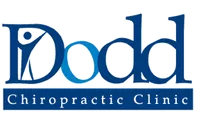Massage is the manipulation of superficial and deeper layers of muscle and connective tissue to enhance the function and promote relaxation and well being.
Massage involves acting on and manipulating the body with pressure structured unstructured, stationary, or moving-tension, motion, or vibration, done manually or with mechanical aids. Target tissues may include muscles, tendons, ligaments, skin, joints, or other connective tissue, as well as lymphatic vessels, or organs of the gastrointestinal system. Massage can be applied with the hands, fingers, elbows, knees, forearm, and feet. There are over eighty different recognized massage modalities.
Massage Methods
Practitioners of massage include massage therapists, athletic trainers, and physical therapists. Massage practitioners work in a variety of medical and recreational settings and may travel to private residences or businesses. Contraindications to massage include deep vein thrombosis, bleeding disorders or taking blood thinners such as Warfarin, damaged blood vessels, weakened bones from cancer, osteoporosis, or fractures, bruising, and fever.
Deep Tissue Massage
Deep tissue massage is designed to relieve severe tension in the muscle and the connective tissue or fascia. This type of massage focuses on the muscles located below the surface of the top muscles. Deep tissue massage is often recommended for individuals who experience consistent pain, are involved in heavy physical activity (such as athletes), and patients who have sustained physical injury. It is not uncommon for receivers of deep tissue massage to have their pain replaced with a new muscle ache for a day or two. Deep tissue work varies greatly.
The term "deep tissue" is often misused to identify a massage that is performed with sustained deep pressure. Deep tissue massage is a separate category of massage therapy, used to treat particular muscular-skeletal disorders and complaints and employs a dedicated set of techniques and strokes to achieve a measure of relief. It should not be confused with "deep pressure" massage, which is one that is performed with sustained strong, occasionally intense pressure throughout an entire full-body session, and that is not performed to address a specific complaint. Deep tissue massage is applied to both the superficial and deep layers of muscles, fascia, and other structures. The sessions are often quite intense as a result of the deliberate, focused work. When a client asks for a massage and uses the term "deep tissue," more often than not he or she is seeking to receive a full-body session with sustained deep pressure throughout. If a practitioner employs deep tissue techniques on the entire body in one session, it would be next to impossible to perform; it might lead to injury or localized muscle and nerve trauma, thereby rendering the session counterproductive.
Myofascial Release Massage
Myofacial release refers to the manual massage technique for stretching the fascia and releasing bonds between fascia, integument, and muscles with the goal of eliminating pain, increasing range of motion and equilibrioception. Myofascial release usually involves applying shear compression or tension in various directions, or by skin rolling.
Swedish Massage
Swedish massage uses five styles of long, flowing strokes to massage. The five basic strokes are effleurage (sliding or gliding), petrissage (kneading), tapotement (rhythmic tapping), friction (cross fiber) and vibration/shaking. Swedish massage has shown to be helpful in reducing pain, joint stiffness, and improving function in patients with osteoarthritis of the knee over a period of eight weeks.
It has also been shown to be helpful in individuals with poor circulation. The development of Swedish massage is credited to Per Henrik Ling, though the Dutch practitioner Johan Georg Mezger adopted the French names to denote the basic strokes. The term "Swedish" massage is actually only recognized in English speaking countries. Elsewhere the style is referred to as "classic massage".
Trigger Point Therapy
Sometimes confused with pressure point massage, this involves deactivating trigger points that may cause local pain or refer pain and other sensations, such as headaches, in other parts of the body. Manual pressure, vibration, injection, or other treatment is applied to these points to relieve myofascial pain. Trigger points were first discovered and mapped by Janet G. Travell (President Kennedy's physician)
Beneficial Effects
Peer-reviewed medical research has shown that the benefits of massage include pain relief, reduced trait anxiety and depression, and temporarily reduced blood pressure, heart rate, and state of anxiety.
Single Dose Effects
Pain Relief: Relief from pain due to musculoskeletal injured and other causes is cited as a major benefit of massage. In one study, cancer patients self-reported symptomatic relief of pain. Acupressure or pressure point massage may be more beneficial than classic Swedish massage in relieving back pain. However, a meta-study conducted is scientists at the University of Illinois at Urbana-Champaign failed to find a statistically significant reduction in pain immediately following treatment.
State Anxiety: Massage has been shown to reduce state anxiety, a transient measure of anxiety in a given situation.
Blood Pressure and Heart Rate: Massage has been shown to reduce blood pressure and heart rate as temporary effects.
Attention: After massage, EEG patterns indicate enhanced performance and alertness on mathematical computations, with the effects perhaps being mediated by decreased stress hormones.
Other: Massage also stimulates the immune system by increasing peripheral blood lymphocytes (PBLs). However, this immune system effect is only observed in aromatherapy massage, which includes sweet almond oil, lavender oil, cypress oil, and sweet marjoram oil. It is unclear whether this effect persists over the long term.

